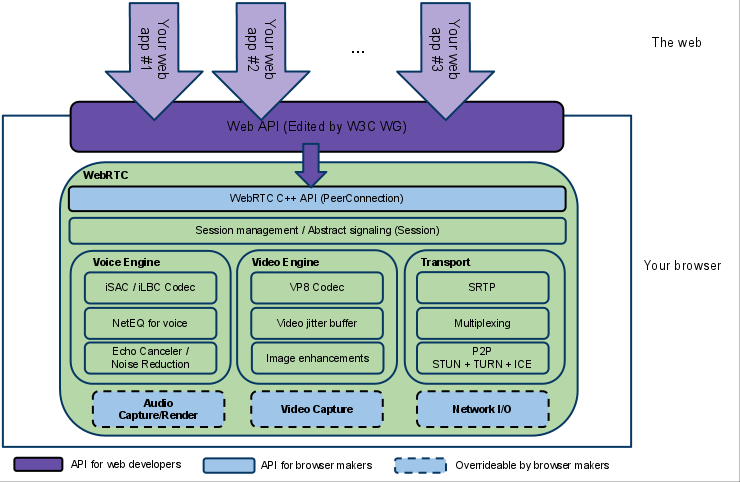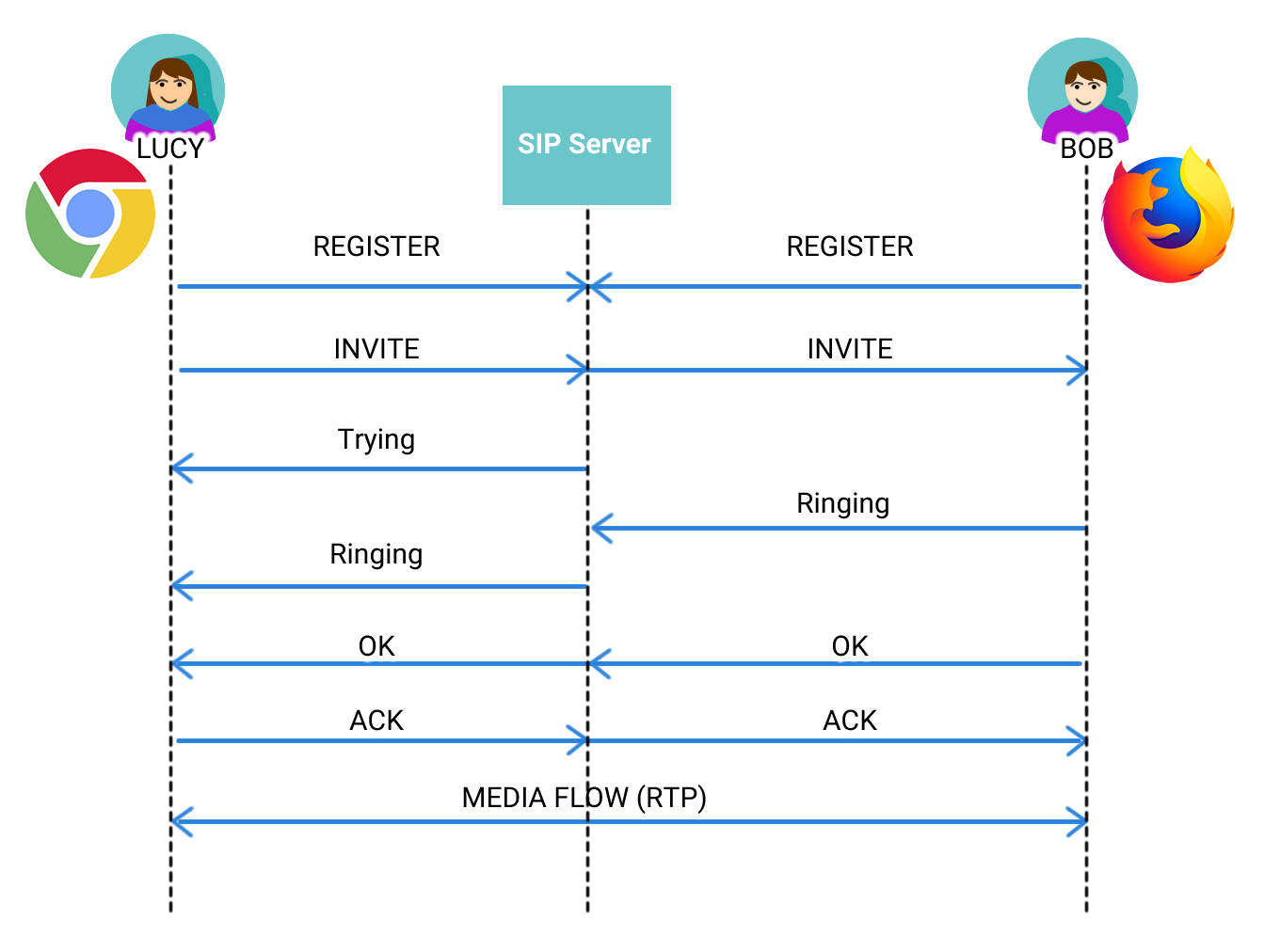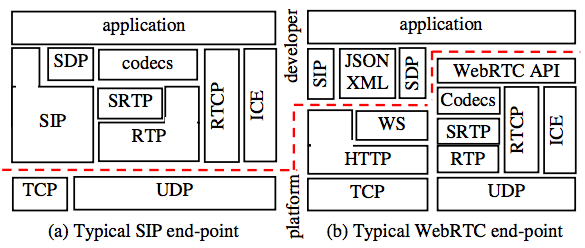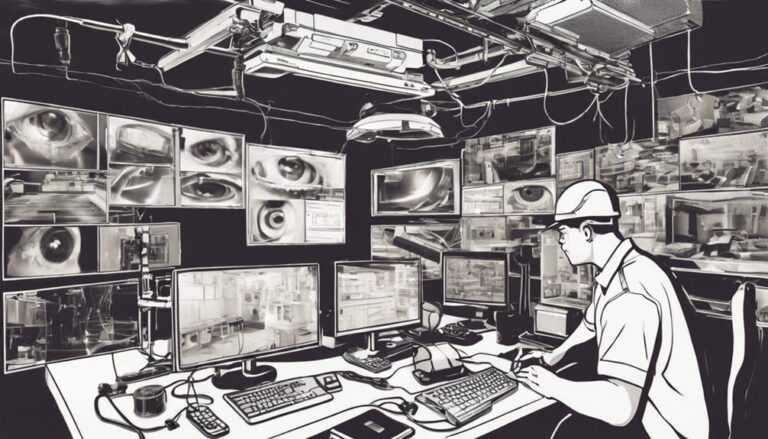WebRTC and RTP are both protocols for real-time communication. WebRTC is used for peer-to-peer connections, while RTP is used for streaming media.
WebRTC, short for Web Real-Time Communication, enables direct peer-to-peer communication in web browsers and mobile apps. It supports video, voice, and data sharing without needing external plugins. RTP, or Real-time Transport Protocol, primarily handles the delivery of audio and video over IP networks.
It forms the backbone for most VoIP and streaming media services. Understanding the differences between WebRTC and RTP helps in choosing the right protocol for your specific communication needs. WebRTC offers simplicity and ease of use, whereas RTP provides robustness and is often employed in complex, high-quality media streaming scenarios.

Introduction To Real-time Communication
Real-time communication (RTC) is the exchange of information instantly. This technology allows data to be sent and received without delay. RTC is critical for modern applications, ensuring seamless interactions.
The Evolution Of RTC
RTC has evolved significantly over the years. Initially, communication relied on traditional telephony. The internet brought new possibilities with Voice over IP (VoIP). VoIP allowed voice communication over the internet, reducing costs and increasing flexibility.
The development of WebRTC (Web Real-Time Communication) marked a major advancement. WebRTC is an open-source project enabling real-time audio, video, and data sharing. It works directly in web browsers without needing plugins.
Importance In Modern Applications
RTC is crucial for various modern applications. It enhances user experience by providing instant communication. Key sectors benefiting from RTC include:
- Telehealth: Doctors can consult patients online in real-time.
- Customer Service: Businesses offer immediate support through video calls.
- Education: Students attend live classes and interact with teachers.
- Gaming: Gamers communicate with teammates during gameplay.
WebRTC and RTP (Real-time Transport Protocol) are two key technologies enabling RTC. Understanding their differences and applications is vital.

Basics Of WebRTC
WebRTC stands for Web Real-Time Communication. It enables real-time audio, video, and data sharing in web browsers. It’s a free and open-source project. WebRTC brings seamless communication to your applications.
Core Features
WebRTC boasts several core features that make it unique:
- Peer-to-Peer Communication: Connects directly between users.
- Bassa latenza: Ensures fast communication.
- High-Quality Media: Supports HD video and audio.
- Secure Connection: Uses encryption for safe communication.
- Cross-Platform: Works on different devices and browsers.
Casi d'uso
WebRTC is versatile and has various use cases:
| Caso d'uso | Descrizione |
|---|---|
| Videoconferenza | Supports group video calls for meetings and webinars. |
| Gioco online | Allows real-time communication between players. |
| Assistenza clienti | Enables live chat and video support on websites. |
| File Sharing | Facilitates the transfer of files between users. |
| Remote Work | Allows teams to collaborate through video and chat. |
Understanding RTP
Understanding RTP is crucial for anyone interested in real-time communication systems. RTP stands for Real-time Transport Protocol. It is the backbone of most streaming technologies. Here, we’ll dive into the key aspects of RTP.
Fundamental Concepts
IL Real-time Transport Protocol (RTP) is a network protocol. It is primarily used for delivering audio and video over IP networks. RTP is designed to offer end-to-end network transport functions. It is specifically tailored for real-time data. RTP works alongside the RTP Control Protocol (RTCP). RTCP monitors transmission statistics. It can also offer Quality of Service (QoS) feedback. Together, RTP and RTCP form a solid framework for real-time applications.
- RTP Header: Contains metadata about the media stream.
- Payload: The actual media data being transported.
- Sequence Numbers: Helps in reordering packets.
- Timestamps: Synchronizes the stream.
RTP can work over both UDP E TCP. However, UDP is more commonly used. This is due to its lower latency. RTP does not ensure delivery. It is up to the application layer to handle packet loss.
Common Applications
RTP is widely used in various applications. Below are some common use cases:
| Applicazione | Descrizione |
|---|---|
| VoIP | Voice over Internet Protocol uses RTP for voice transmission. |
| Videoconferenza | Enables real-time video communication, like Zoom or Skype. |
| Streaming in diretta | Platforms like YouTube Live utilize RTP for media delivery. |
| Gioco online | Real-time interactions in games often use RTP. |
Understanding RTP is essential for anyone working with real-time media. Whether you are into VoIP, videoconferenza, O streaming in diretta, RTP plays a crucial role. It ensures that your data reaches its destination quickly and efficiently.
Differenze chiave
Capire il differenze chiave between WebRTC and RTP is crucial. Both are used for real-time communication. But they serve different purposes and have distinct features.
Protocol Structures
WebRTC is a set of protocols and APIs. It facilitates peer-to-peer communication directly from browsers. It is built on top of multiple protocols like STUN, TURN, and ICE. These help in establishing and maintaining connections.
RTP stands for Real-Time Transport Protocol. It is used to deliver audio and video over IP networks. RTP is primarily used in conjunction with RTCP (RTP Control Protocol). This helps in quality control and synchronization.
| Caratteristica | WebRTC | RTP |
|---|---|---|
| Application Layer Protocol | Yes, integrates with browsers | No, relies on other protocols |
| Protocol Complexity | High (multi-protocol) | Moderate (single protocol) |
| Sicurezza | High (built-in encryption) | Low (requires external security measures) |
Performance Metrics
Latenza is a crucial metric for both protocols. WebRTC generally offers lower latency due to direct peer-to-peer communication. RTP, on the other hand, may experience higher latency because it often relies on centralized servers.
Qualità del servizio (QoS) is another important factor. WebRTC automatically adjusts bitrate and resolution based on network conditions. RTP relies on RTCP for QoS but needs additional configurations.
- WebRTC is optimized for lower latency.
- RTP can have higher latency depending on the setup.
- WebRTC adapts to network conditions automatically.
- RTP needs manual QoS configurations.
To summarize, understanding these differenze chiave can help you choose the right protocol for your needs.
Aspetti di sicurezza
Security is a critical factor in communication protocols. WebRTC and RTP offer different security features. Understanding these can help you choose the right technology.
Encryption Methods
WebRTC uses end-to-end encryption. This means data is encrypted from sender to receiver. It employs DTLS (Datagram Transport Layer Security) for signaling and SRTP (Secure Real-time Transport Protocol) for media streams. This ensures a high level of security.
RTP does not include encryption by default. You need to implement additional protocols. SRTP can be added to encrypt RTP streams. Yet, it requires extra configuration.
| Caratteristica | WebRTC | RTP |
|---|---|---|
| Default Encryption | SÌ | NO |
| Protocols Used | DTLS, SRTP | Optional SRTP |
Vulnerability Considerations
WebRTC offers built-in security features. These reduce the risk of vulnerabilities. It uses ICE (Interactive Connectivity Establishment) to handle network traversal. This process includes security checks.
RTP, in its basic form, lacks built-in security. You need to add security layers. This can increase complexity and potential vulnerabilities.
- WebRTC has built-in security checks.
- RTP requires additional security configurations.
Choosing between WebRTC and RTP depends on security needs. WebRTC offers strong default security. RTP needs extra steps for secure implementation.
Integration Challenges
Integrating WebRTC and RTP can be difficult. Understanding these challenges is essential. Let’s explore the core issues related to integration.
Compatibility Issues
Compatibilità is a major concern. WebRTC and RTP use different protocols. WebRTC relies on UDP while RTP can use both UDP and TCP. This difference creates challenges in network configurations.
Another issue is browser support. WebRTC is supported by most modern browsers. RTP, however, requires additional plugins or software. This can limit the esperienza utente.
Here is a table summarizing the differences:
| Caratteristica | WebRTC | RTP |
|---|---|---|
| Protocollo | UDP | UDP/TCP |
| Browser Support | Alto | Basso |
| Plugins Required | NO | SÌ |
Implementation Hurdles
Implementation of WebRTC and RTP can be tricky. WebRTC offers built-in features like crittografia. RTP needs additional security layers.
Developers face challenges with interoperability. WebRTC has built-in NAT traversal capabilities. RTP requires manual configuration for this.
Here are some key hurdles:
- Sicurezza: WebRTC encrypts data by default. RTP does not.
- NAT Traversal: WebRTC handles NAT automatically. RTP needs manual setup.
- Code Complexity: WebRTC has simpler APIs. RTP involves more complex coding.
Scenari di casi d'uso
Capire il use case scenarios for WebRTC and RTP can help choose the right protocol. Each has distinct advantages and fits specific applications perfectly.
Videoconferenza
WebRTC is ideal for video conferencing. It provides low latency and real-time communication. WebRTC allows easy integration into web browsers. No plugins are needed, ensuring a seamless experience.
RTP is also used in video conferencing but often requires additional protocols. RTP can handle complex network conditions with RTP Control Protocol (RTCP). This makes RTP suitable for enterprise-level solutions.
| Caratteristica | WebRTC | RTP |
|---|---|---|
| Latenza | Basso | Variabile |
| Integrazione | Facile | Complex |
| Scalabilità | Alto | Alto |
Streaming in diretta
WebRTC is great for live streaming with real-time interaction. It ensures low delay and high-quality streams. WebRTC supports interactive applications like live auctions and gaming.
RTP is better for large-scale live streaming events. It can handle high bandwidth and multiple streams. RTP works well with streaming servers to distribute content efficiently.
- WebRTC: Best for interactive live streams.
- RTP: Ideal for large-scale broadcasting.
Choosing between WebRTC and RTP depends on the specific use case. Both offer unique benefits for video conferencing and live streaming.
Tendenze future
The future of WebRTC and RTP is exciting and full of potential. Both technologies are evolving rapidly. Let’s explore the upcoming trends that will shape these technologies.
Technological Advancements
WebRTC and RTP are set to benefit from several technological advancements:
- 5G Integration: Faster speeds and lower latency will enhance real-time communication.
- AI and Machine Learning: Improved performance through better data handling and decision-making.
- Edge Computing: Reduced delay by processing data closer to the source.
These advancements promise to make WebRTC and RTP more reliable and efficient. Users can expect smoother and faster communication.
Predicted Industry Shifts
The industry is likely to see significant changes:
| Tendenza | Impatto |
|---|---|
| Increased Adoption: | More companies will use WebRTC and RTP for communication. |
| Standardization: | Unified protocols will simplify integration and improve compatibility. |
| Security Enhancements: | Stronger encryption and authentication will protect user data. |
These shifts indicate a bright future for WebRTC and RTP. We can expect more innovation and better user experiences.

Domande frequenti
What Is Webrtc Used For?
WebRTC is used for real-time communication via web browsers. It enables audio, video, and data sharing. It’s widely used in video conferencing, live streaming, and gaming.
How Does Rtp Work?
RTP (Real-Time Protocol) works by transmitting audio and video over IP networks. It ensures data delivery in real-time. It’s commonly used in VoIP and streaming applications.
Is Webrtc Better Than Rtp?
WebRTC and RTP serve different purposes. WebRTC is browser-based and easier to implement. RTP is more versatile but requires more setup. Choosing depends on your specific needs.
Can Webrtc Replace Rtp?
WebRTC can replace RTP for browser-based applications. However, RTP is still essential for many non-browser-based systems. Each has its strengths and use cases.
Conclusione
Choosing between WebRTC and RTP depends on your specific needs. WebRTC offers real-time communication without plugins. RTP provides a robust protocollo per lo streaming media. Both have their strengths and are suitable for different scenarios. Understanding their differences helps you make an informed decision.
Leverage the right protocol to enhance your communication infrastructure.



